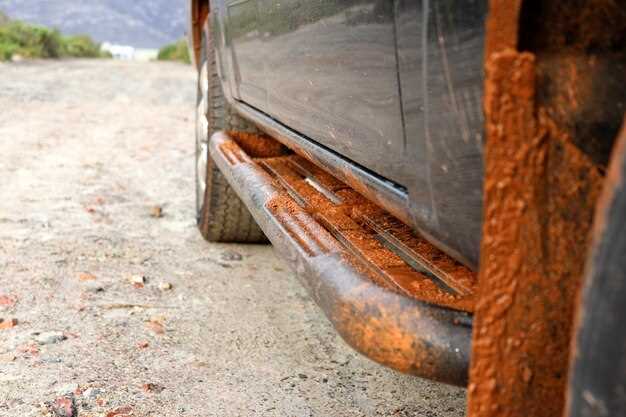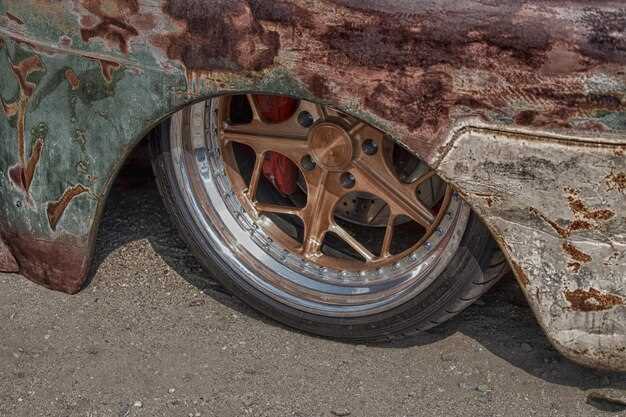

When it comes to vintage cars, maintaining their pristine condition is paramount for enthusiasts and collectors alike. One of the most critical concerns for preserving these classic automobiles is the prevention of rust, particularly on the undercarriage where exposure to the elements can lead to significant deterioration. This article will explore effective methods for preventing rust, ensuring that these cherished vehicles can be enjoyed for generations to come.
The undercarriage of classic cars is often exposed to moisture, dirt, and salt, all of which can accelerate the rusting process. Prevention is more cost-effective and less time-consuming than dealing with the aftermath of rust damage. Therefore, implementing proper protective measures from the outset is essential for any vintage car owner committed to maintaining their vehicle’s longevity.
In upcoming sections, we will examine various techniques and products specifically designed for rust prevention on classic car undercarriages. From protective coatings to regular maintenance practices, knowing the right strategies can make a significant difference in preserving the integrity of vintage vehicles. With the right approach, car enthusiasts can keep their classic cars in excellent condition, minimizing the impact of rust and ensuring their beauty endures.
Preventing Rust on Classic Car Undercarriages
Classic cars are cherished for their beauty and historical significance. However, their undercarriages are particularly vulnerable to rust due to exposure to moisture, road salts, and other corrosive elements. Implementing effective prevention methods is essential for maintaining these vehicles in pristine condition.
- Regular Cleaning: Frequent washing of the undercarriage removes dirt, salt, and grime, which can trap moisture. Use a pressure washer to thoroughly clean hard-to-reach areas.
- Inspection: Conduct regular inspections of the undercarriage to identify areas where rust may be developing. Look for signs such as flaking paint, bubbling, or discoloration.
- Rust Inhibitors: Apply rust inhibitors or protective coatings specifically designed for automotive use. These products create a barrier against moisture and corrosion.
- Proper Storage: Store classic cars in a dry, climate-controlled environment. Avoid areas with high humidity or direct exposure to harsh weather conditions.
- Sealants: Use sealants on joints and seams to prevent water from seeping into areas where rust tends to form. Ensure that any sealant used is compatible with automotive materials.
By focusing on these prevention methods, owners can significantly extend the life of their classic car undercarriages and preserve the overall integrity of their vehicles.
Choosing the Right Protective Coatings for Vintage Cars
When it comes to preserving vintage cars, one of the most critical aspects is the prevention of rust, particularly on the undercarriage. Selecting the appropriate protective coatings can significantly enhance the longevity and appearance of these classic vehicles.
There are several types of coatings available, each with its unique benefits. Oil-based rust inhibitors create a barrier that repels moisture and contaminants. They are easy to apply and can seep into small crevices, providing comprehensive protection against rust formation. However, they often require reapplication as they can wear off over time.
Rubberized undercoatings are another excellent option for vintage cars. These coatings dry to form a durable, flexible layer that withstands impacts and abrasions. They are particularly useful in protecting against road debris and moisture, reducing the likelihood of rust developing on the undercarriage.
Epoxy coatings offer superior protection and are ideal for classic vehicles that are regularly driven. Their robust composition provides an excellent barrier against corrosion. However, they require meticulous preparation during application, including surface cleaning and priming, to ensure proper adhesion.
When choosing a protective coating, consider the specific conditions the vintage car will encounter. Environmental factors, such as humidity and exposure to road salts, can influence the effectiveness of the coating. Additionally, the intended use of the vehicle should guide your choice; those who drive their classics regularly may need a more resilient option.
Ultimately, the goal is to achieve maximum rust prevention without compromising the vehicle’s historic integrity. Regular maintenance and periodic inspections of the undercarriage will ensure early detection of any potential rust issues, allowing you to address them before they escalate.
Proper Cleaning and Maintenance Techniques to Avoid Rust

Keeping vintage cars rust-free requires diligent cleaning and regular maintenance. The undercarriage of these classic automobiles is particularly vulnerable to rust due to exposure to moisture, road salts, and dirt. To prevent rust formation, it is essential to establish a comprehensive cleaning routine.
Begin by washing the undercarriage thoroughly with a high-pressure washer or hose. This step removes any accumulated dirt, grime, and salt that can trap moisture against metal surfaces. Pay special attention to wheel wells and areas where debris tends to collect. Ensure that you allow adequate drying time to minimize the risk of moisture lingering on the surfaces.
After cleaning, it is advisable to inspect the undercarriage for any signs of existing rust or damage. If any rust spots are detected, treat them immediately using appropriate rust removal products. Sand the affected areas, apply a rust converter, and follow up with a protective coating. This proactive approach will significantly extend the life of your vintage car’s undercarriage.
Regular maintenance also plays a critical role in rust prevention. Consider applying a rust-inhibiting undercoating or sealant once the undercarriage is clean and dry. These products create a barrier against moisture and contaminants, reducing the chances of rust development. Additionally, consider checking drainage points and ensuring that water does not accumulate in critical areas.
Lastly, store your vintage car in a climate-controlled environment to minimize exposure to humidity and temperature fluctuations. Using a breathable car cover will also protect it from dust and moisture while allowing it to breathe. Following these cleaning and maintenance techniques will allow you to preserve the beauty and integrity of your classic vehicle for years to come.
Identifying and Sealing Potential Rust Prone Areas

Vintage cars are prized possessions for many enthusiasts, but their undercarriages are particularly vulnerable to rust. Understanding where rust is likely to develop is crucial for preservation. The first step in identifying rust prone areas is inspecting the undercarriage for signs of corrosion, such as flaking paint or bubbling surfaces. Pay special attention to components such as the frame, floor pans, and wheel wells that are more susceptible due to moisture retention.
Common areas where rust can start include seams, welds, and body panels where water may accumulate. The area around the exhaust system is also prone to rust due to high heat and condensation. Inspecting brake lines and fuel tanks is necessary, as they can corrode if protective coatings wear off. Additionally, the edges of fenders and bumpers may collect debris and moisture, creating an ideal environment for rust formation.
Once potential risk areas are identified, sealing them is paramount. Applying rust inhibitors and protective coatings can greatly reduce the likelihood of rust developing. Using a high-quality rust-proofing spray or wax helps to seal off exposed metal from moisture. It is advisable to treat these areas at least once a year, particularly before winter when road salt can exacerbate corrosion.
Lastly, regular maintenance checks can prevent the onset of rust. Cleaning the undercarriage to remove dirt and salt buildup, combined with inspections for any developing issues, can keep your vintage car in excellent condition for years to come. By proactively addressing potential rust prone areas, you ensure the longevity and beauty of your classic car.






